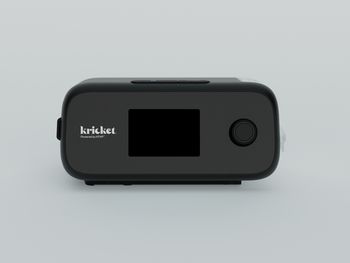
Tips to guarantee successful patient centered medical homes
The patient centered medical home (PCMH)-once a somewhat nebulous concept-has become more tangible over the last eight years as primary care organizations have implemented strategies to achieve its fundamental tenets.
The patient centered medical home (PCMH)- once a somewhat nebulous concept-has become more tangible over the last eight years as primary care organizations have implemented strategies to achieve its fundamental tenets.
With the model tested and observed, rigorous and creative quality measures, well-planned and coordinated care, and inventive access initiatives, paired with dutiful patient tracking, have all emerged as elements of a successful PCMH.
Measurement that transcends standards
There are certain quality measures that every organization is tracking, generally due to payer or government mandates. Most organizations implementing or attempting to implement the PCMH model are already scoring 90% or above in these metrics.
However, once an organization reaches that plateau, those metrics are likely no longer delivering useful information to drive further quality improvement.
One way PCMHs are finding new areas to improve is by tracking multiple data measures and correlating them to find areas for improvement.
For example, every organization tracks average wait time. Better organizations will correlate all the information they can gather from their EHRs on wait time with their patient opinion surveys. In doing so, they determine if there are specific moments in the patient care experience that affect how patients perceive whether the wait time was appropriate.
The best organizations are tracking 200 or more metrics. Think about how much technology or credit card companies know about you; primary care doctors–who actually have a benevolent use for that data–should be making similar efforts to learn about their patients and how to improve their care experience.
Stratified care plans with well-defined care teams
It is a well-known adage in health care that a small number of patients consume a large majority of resources. Well-run PCMHs identify those high-risk patients, or patients who are likely to become high-risk, early on, and develop personalized care plans to deliver appropriate treatments and connect them with effective staff resources.
When an organization becomes a PCMH, the ratio of full-time, non-physician providers to physicians generally increases.
This requires a cultural shift for some organizations and is often one of the greatest hurdles to overcome in implementing a PCMH.
Physicians who like to maintain complete control over patient care will likely need to adjust their roles. Everyone, especially practice leadership, must be convinced why the transformation is good for themselves and their patients. One strategy is to convince the most skeptical or stubborn leader in the organization. If she buys in, everyone will.
Integration of ancillary staff into a care team can lead to inspiring results at key moments.
For example, a high-risk patient in Florida with diabetes was not engaging in her own care, despite the best efforts of her physician. Then, a health coach assigned to the patient noticed that she was wearing toenail polish and was particularly enthusiastic about it.
The health coach told the patient that she would have new polish for the patient every week if she came in for her appointment. She returned week after week, and in addition to receiving toenail polish, she received education about her diabetes. Her numbers improved substantially and every party involved was better off because of it.
While the example is anecdotal, it demonstrates how a care team with defined roles can engage a patient in her own care in ways that have the potential to improve health outcomes.
Creating access, managing referrals, and tracking transitions of care
Making it easier for patients to access care is an ongoing effort for any successful PCMH. This means implementing expanded hours, telemedicine and telephonic programs, and also finding new ways to measure patient access.
Effective data to track for measuring access include simple things like: how many times a patient visited the emergency room during the daytime and when they could have seen the primary care physician. Did the patient go to the ER because their physician’s schedule was full, or was it because they forgot to call the office?
Getting this data can demonstrate the efficacy of access initiatives, and if greater patient education is necessary.
Managing referrals and tracking transitions of care, like patient access, are elements of successful PCMHs that are easier in theory than execution. However they are critical to managing outcomes.
When a primary care physician refers patients out to specialists, all the information from their visits needs to flow back into a centralized location for the primary care team. Similarly, when patients transition from specialists to hospitals, hospitals to skilled nursing care, and everywhere in between, their primary care team has to track the patient throughout the whole process, which requires a robust and flexible information infrastructure.
Continuously seeking improvement
All PCMHs, from beginners to advanced, can find value in onsite accreditation surveys, which glean insights sometimes not immediately recognizable in pure data.
The Accreditation Association for Ambulatory Health Care (AAAHC) is one of a small group of organizations that have developed standards to gauge the efficacy of PCMHs. Applying for PCMH accreditation through AAAHC requires an onsite survey by a qualified peer.
During an onsite PCMH survey, a surveyor follows a patient through the entire care process, from registration to discharge, observing each interaction and ways the patient is engaged in planning his or her care. After the survey, the surveyor informally chats with the patient as an independent third-party.
This qualitative research is a useful tool for brainstorming new initiatives to measure quantitatively.
Dennis Schultz, MD, MSPH, FACOEM, is a surveyor for the Accreditation Association for Ambulatory Health Care (AAAHC) and he has served more than a decade as an AAAHC board member. He graduated from the University of Wisconsin Medical School and has completed residencies in family and occupational medicine.
Newsletter
Stay informed and empowered with Medical Economics enewsletter, delivering expert insights, financial strategies, practice management tips and technology trends — tailored for today’s physicians.














